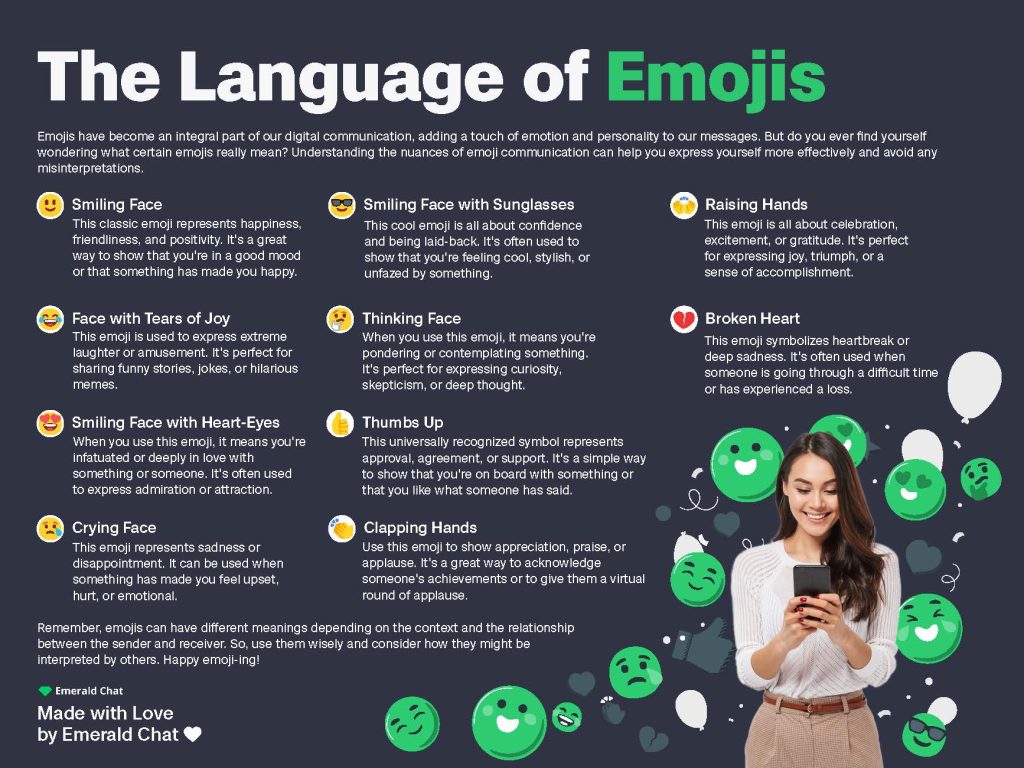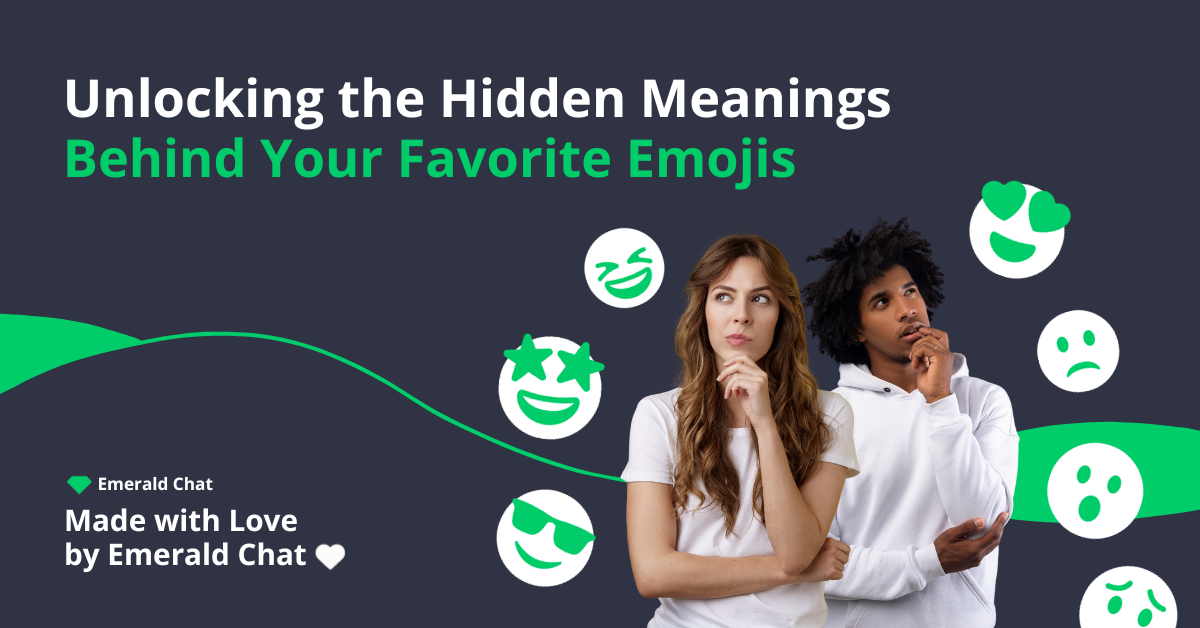In today’s digital age, emojis have become an integral part of our daily communication. These small, colorful icons have taken the world by storm and have revolutionized the way we express ourselves in written form. From text messages to social media posts, emojis are everywhere. The use of emojis has increased significantly in recent years, with people of all ages and backgrounds incorporating them into their conversations. But why have emojis become so popular? What is the psychology behind their usage? In this article, we will explore the fascinating world of emojis and delve into their meanings and cultural significance.
The Psychology of Emojis: Why We Use Them
Emojis serve a crucial purpose in our digital communication by helping us express emotions that are difficult to convey through text alone. When we communicate face-to-face, we rely on facial expressions, body language, and tone of voice to convey our feelings. However, when we communicate through text, these non-verbal cues are lost. Emojis bridge this gap by allowing us to add context and tone to our messages. For example, a simple “thank you” can be interpreted differently depending on whether it is accompanied by a smiley face or a frowning face emoji.
Furthermore, emojis can also help us build rapport and establish a connection with the person we are communicating with. Research has shown that using emojis in online conversations can lead to increased likability and perceived warmth. By using emojis, we are able to convey our emotions more effectively and create a sense of empathy and understanding with the recipient. This is particularly important in digital communication, where misinterpretations and misunderstandings are common.
Decoding the Most Popular Emojis: What They Really Mean
Emojis come in various shapes and forms, each with its own unique meaning. Let’s take a closer look at some of the most popular emojis and what they really mean:
👍 The thumbs up emoji: This emoji is often used to indicate approval or agreement. It can be seen as a positive gesture, similar to giving someone a thumbs up in real life.
😍 The heart eyes emoji: This emoji is commonly used to express love or admiration. It signifies that something or someone is so beautiful or amazing that it makes our hearts flutter.
😂 The crying laughing emoji: This emoji is used to indicate that something is funny. It is often used in response to a joke or a humorous situation.
🔥 The fire emoji: This emoji is used to indicate that something is hot or cool. It can be used to describe a person, an event, or even an object that is trendy or impressive.
😎 The smiling face with sunglasses emoji: This emoji is commonly used to convey a sense of coolness or confidence. It signifies that someone is feeling good about themselves or that something is impressive.

The Hidden Meanings Behind Colorful Heart Emojis
Heart emojis are some of the most commonly used emojis, and each color has its own unique meaning. Let’s explore the hidden meanings behind these colorful heart emojis:
❤️ The red heart emoji: This emoji is universally recognized as a symbol of love or romance. It is often used to express deep affection towards someone or to convey romantic feelings.
💗 The pink heart emoji: This emoji is commonly used to represent friendship or affection. It signifies a close bond between two individuals and is often used in a platonic context.
💜 The purple heart emoji: This emoji is often used to represent support or compassion. It is commonly used to show solidarity with a cause or to express empathy towards someone who is going through a difficult time.
💙 The blue heart emoji: This emoji is often used to represent trust or loyalty. It signifies a strong and unwavering commitment to someone or something.
The Surprising Origins of the Poop Emoji
The poop emoji 💩, despite its seemingly crude nature, has an interesting origin story. The poop emoji 💩, officially known as a pile of poo, was created in 2010 by a Japanese designer named Shigetaka Kurita. Kurita was working on a set of 176 emojis for a mobile internet platform called i-mode, and he included the poop emoji as a way to represent something that people universally understand and can relate to. Little did he know that this simple and somewhat crude symbol would become one of the most popular emojis in the world, transcending language barriers and bringing laughter to millions of people worldwide. So next time you use the poop emoji 💩, remember its humble beginnings and appreciate its ability to bring joy to our digital conversations.
The Cultural Significance of Hand Gesture Emojis
Hand gesture emojis can have different meanings in different cultures. For example, the thumbs up emoji 👍 is a positive gesture in Western cultures, indicating approval or agreement. However, in some Middle Eastern countries, the thumbs up gesture is considered offensive and vulgar. Similarly, the peace sign emoji ✌️ is a symbol of peace and unity in Western cultures, but it can be seen as a rude gesture in some Asian countries. These cultural differences highlight the importance of understanding the context and cultural norms when using hand gesture emojis.
The Evolution of Emojis: From Simple Icons to Complex Expressions
Emojis have come a long way since their inception. Originally, emojis were simple icons that represented basic emotions or objects. However, as technology advanced and our communication needs evolved, emojis became more complex and expressive. Today, emojis come in various shapes, sizes, and designs, allowing us to convey a wide range of emotions and ideas. New emojis are constantly being added to reflect changes in our culture and society. For example, emojis representing diverse skin tones and gender identities have been introduced to promote inclusivity and representation.
The Impact of Emojis on Language and Communication
Emojis have had a profound impact on the way we communicate. They have become a new form of language that is universal and accessible to everyone, regardless of language barriers. Emojis allow us to express ourselves in a way that is authentic and relatable. They add depth and nuance to our messages, helping us convey emotions and tone more effectively. Emojis have also influenced the way we write and communicate, with many people incorporating emojis into their everyday language. Some argue that emojis are replacing words altogether, while others see them as a valuable addition to our communication toolkit.
Conclusion: Emojis as a Reflection of Our Emotions and Culture
In conclusion, emojis have become an integral part of our daily communication. They help us express ourselves in a way that is authentic and relatable, bridging the gap between text-based communication and face-to-face interaction. Emojis are a reflection of our emotions and culture, allowing us to convey complex ideas and emotions in a simple and visual way. As technology continues to advance, emojis will continue to evolve and shape the way we communicate in the future. So, the next time you send a text, chat with someone, or post on social media, don’t forget to add a little emoji to truly express yourself.


Leave a Reply